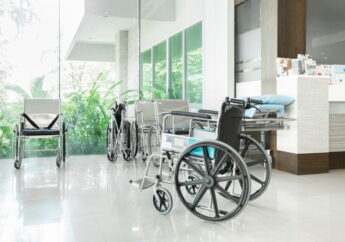Eight Tips To Improve Patient Care In Healthcare Facilities
by Arina Smith Health Care Services Published on: 19 March 2021 Last Updated on: 02 June 2023

The expansion of healthcare from small doctors’ clinics to more prominent hospitals at every nook and corner has made it convenient for patients to acquire medical help. Awareness and quality patient care treatments are the keys to a healthier lifestyle and improved social well-being.
As the world is advancing, more attention is drawn to critical patient care. Healthcare practitioners are keen to provide the best treatment possible to their patients. Hence many efforts are made to optimize and enhance treatment outcomes and overall efficiency in the healthcare system. Following are some vital tips that you can use to provide better treatment and experiences to patients.
Prioritize Newborn Infants:
Children who are born prematurely are highly prone to all sorts of diseases and infections. If they are not looked after adequately, newborn infants face a higher chance of contracting infections. Therefore, newborns should always be kept in sterile environments to keep them safe and healthy. Moreover, nursing staff in these wards should be given proper training on handling babies to avoid any mishaps.
Improve The Overall Work Environment:
A healthcare facility’s environment constitutes a significant portion of the overall quality of service delivered to patients. This includes staff friendliness, cleanliness, treatment options, administration, etc. Changes in routine processes and practices eventually create an environment conducive to providing quality care to patients.
It would be best if healthcare facilities hired staff to streamline day-to-day managerial and administrative processes so that clinical staff can deliver better care to patients. Alternatively, the facility can also encourage existing staff members to enroll in an MHA online (Master’s in Healthcare Administration) to learn the ropes of hospital management. This way, not only will the facility be investing in its human resources for long-term benefit, but it will also ensure that administrative processes are up-to-date with industry and business standards.
Make Patients Your Top Priority:
The conventional mindset is that any business’s goal is to generate a profit for investors and stakeholders. While capital is essential for managing and running any venture, a healthcare-related business or facility’s main goal should always be to provide patients with optimum care. What matters the most is that patients are given the proper treatment at the right time.
By understanding patients’ individual needs, the quality of care will automatically improve. Each patient has unique problems that need treatment accordingly. Taking each case’s individuality into account will help create a more precise plan for each patient.
Ensure Adequate Care For Pregnant Women:

In most countries, pregnant women don’t receive the care and treatment their body requires. This eventually puts the life of both the mother and unborn child at risk. Given the intricacy of the condition, healthcare facilities must prioritize providing pregnant women with top-most care during pregnancy and after childbirth.
There can be potential problems in each case that should be discovered at the right time and treated efficiently to reduce stillbirths and female deaths. As a solution, healthcare facilities can employ a more cost-effective plan to assist women from various financial backgrounds in acquiring the same level of care during and after pregnancy.
The Staff Should Be Well-Motivated And Educated:

Hospitals should always hire staff that is well educated and motivated to perform on the job. While opting for nursing staff, ensure that they have a primary nursing degree followed by relevant experience. Additional certifications and qualifications above an undergrad degree are always a plus point. Similarly, hiring allied health workers can enhance hospital administration, patient counseling, and advocacy and improve the facility’s overall level of care and service. It is also vital to continually encourage existing staff members to up-skill and familiarize themselves with modern healthcare practices and knowledge.
Problems such as understaffing, low pay scales, and lack of equipment can severely affect employee health and morale, eventually leading to bad patient care delivery. In some cases, this may even lead to fatal consequences that tarnish the healthcare facility’s reputation. To have a vigilant and motivated staff, hospitals should ensure they offer market-competitive remuneration, reasonable working hours, and the right equipment to keep staff members safe from infections. All these elements ensure that healthcare staff are safe, healthy, and motivated to work towards the common goal of providing better patient care.
Maintain Proper Patient Records:
Maintaining good medical history makes delivering proper patient care easy both in the short and long run. It is easier for doctors and nurses to track their patient’s records and suggest treatments accordingly. Not only does maintaining a record save time by making information readily available, but it also makes the treatment process more accurate based on what patients need.
Consider using custom-made digital databases and software that are easy to use by most staff members in a healthcare facility. It will also simply patient data entry and decision-making by concerned practitioners. Using a cloud-based system will also help to make the data available to patients from anywhere they choose.
The Healthcare Facility Should Be Equipped With The Latest Technology:

Technology has influenced every industry, and healthcare is no exception. Automation has simplified many mundane and complex medical procedures enabling doctors and nurses to provide better care alternatives. Mobile devices, automated IV pumps, and smart beds are a few of the technological advancements that make mundane healthcare tasks like cross-checking medical records, dispensing drugs, and taking vitals extremely efficient. Similarly, health-tech also makes amenities such as telemedicine easier to manage. With the right equipment, doctors can assist with patience without visiting the hospital after waiting for months.
Technology also simplifies such as billing, check-in and discharge, and routine cleaning practices more manageable. Furthermore, implementing a PACS system simplifies the storage, retrieval, and sharing of medical images and related patient information within a healthcare facility, streamlining workflows and improving efficiency. The overall impact of tech integration in a healthcare facility leads to more efficient processes while healthcare workers focus on the more crucial tasks. This helps to enhance the level of service patients receive while they are admitted into the facility.
Summing It All Up:
Failing to provide proper care at the right time can jeopardize a healthcare facility’s reputation. It would be best to employ an interdependent care system and harmonize non-clinical and clinical tasks to provide better care. This may require strong leadership qualities as well as more digitized technological knowledge. However, following the tips mentioned above can serve as a starting point for improving patient care delivery.
Read Also:







































































































